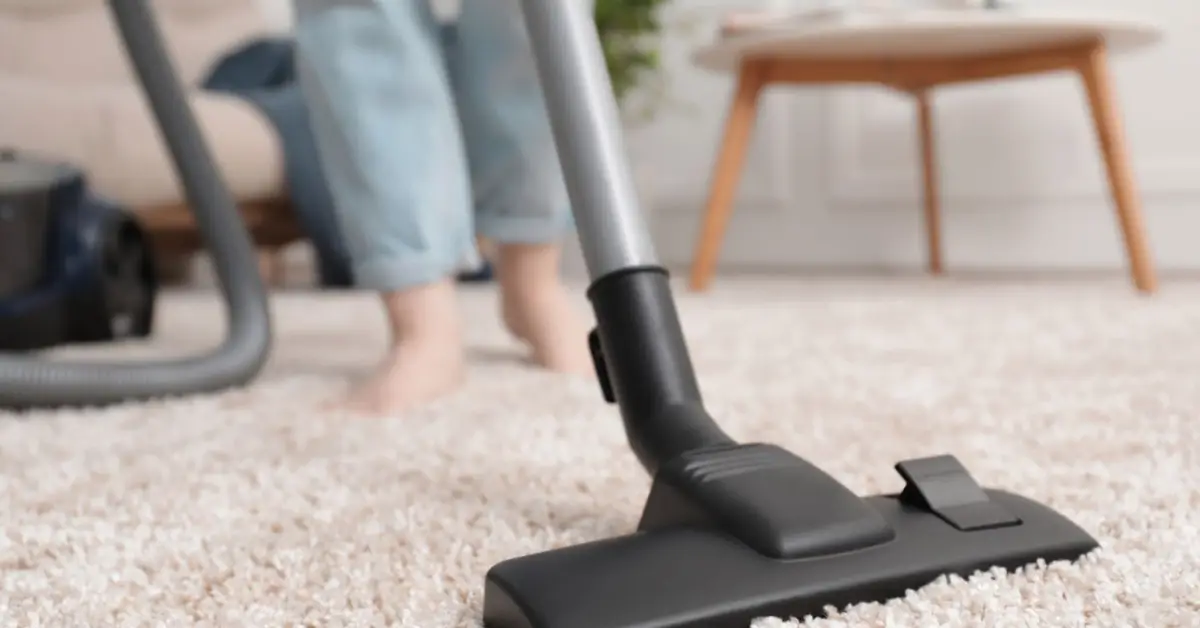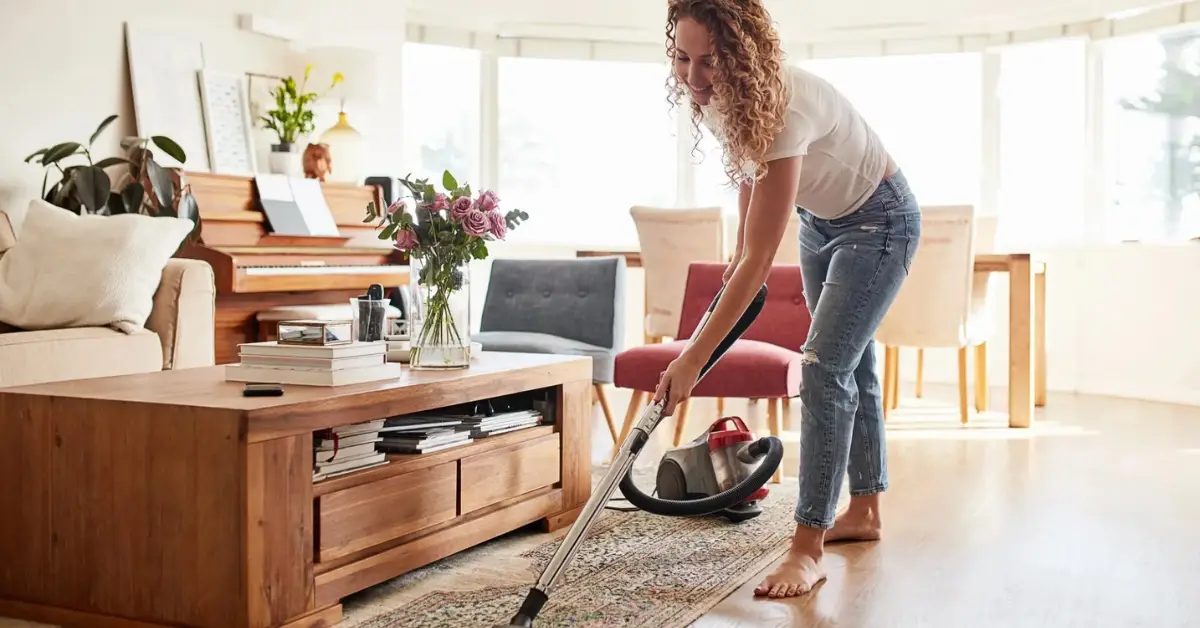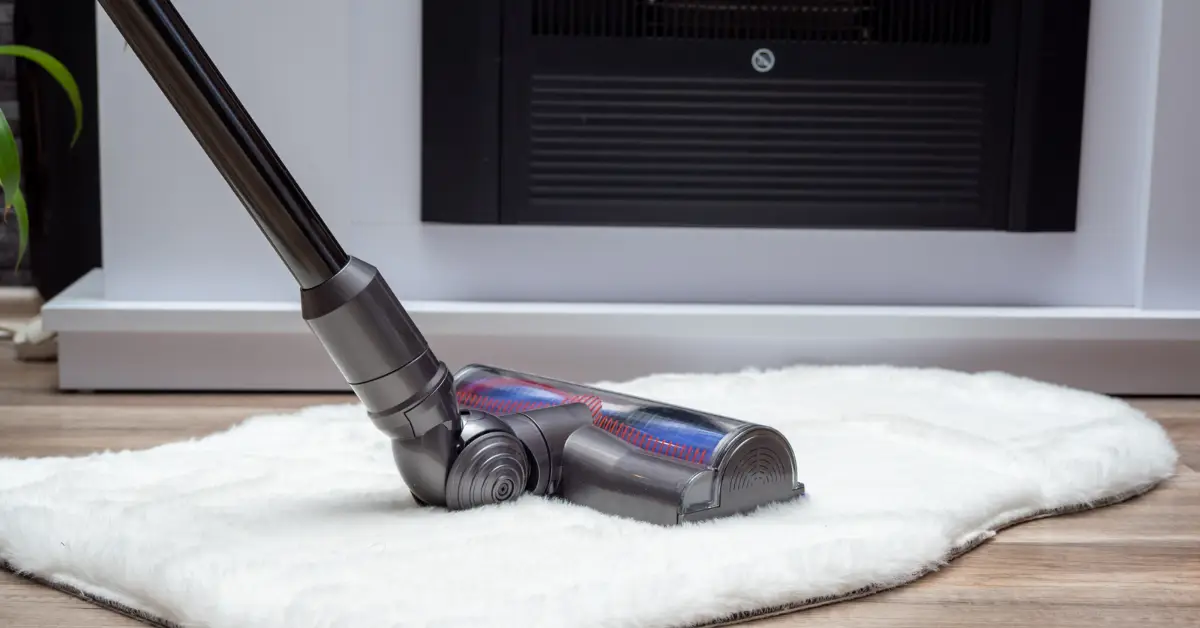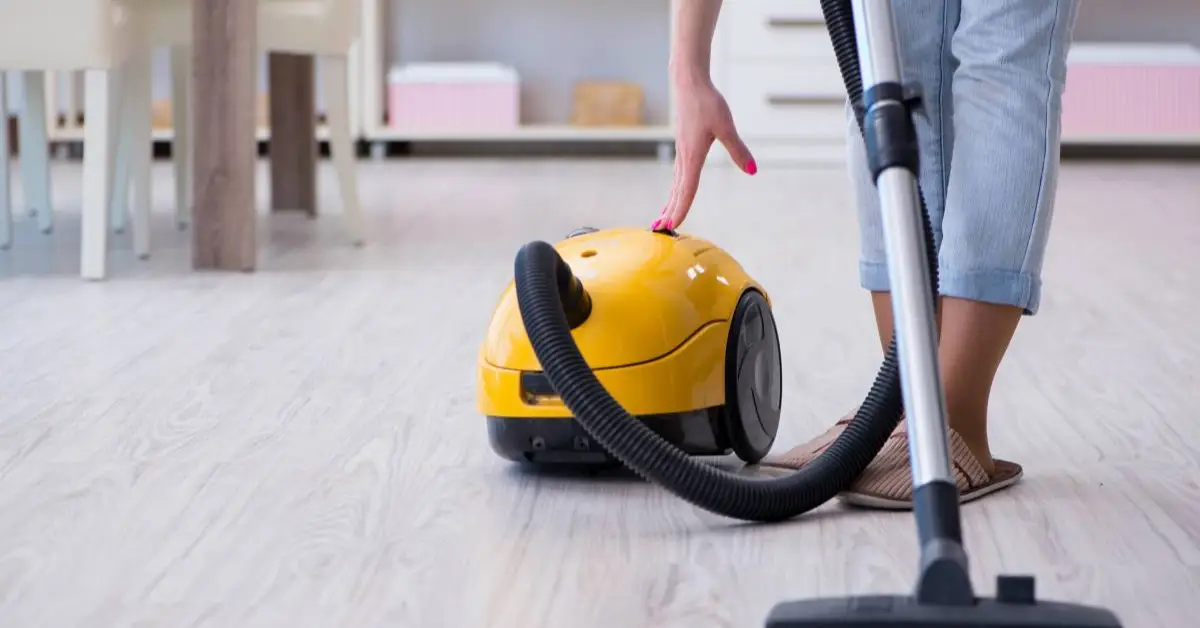10 Places in Your House That Need a Quick Vacuum Every Week
We all know the feeling—your house looks mostly clean, but there’s something about the dust in the air and that little bit of dirt you can’t quite reach that drives you crazy. I used to think I could get away with skipping some spots here and there, but trust me, those little missed areas add up. After all, vacuuming isn’t just about making your home look tidy—it’s about creating a healthier, more comfortable living space.
If you’re anything like me, you probably don’t want to spend all weekend vacuuming. But here’s the thing: focusing on a few key spots every week can make a huge difference. In this article, we’re going to dive into the 10 areas in your home that really need vacuuming every week. Trust me, these spots are often overlooked, but skipping them could be doing more harm than good.
Why Vacuuming Weekly Is Essential for Your Home’s Cleanliness
Let’s be honest: vacuuming might not be the most exciting chore on your list. But skipping it? That can cost you in ways you might not even realize. I’ve learned firsthand how a weekly vacuuming routine can make a big difference in keeping your home healthy and damage-free. If you’re wondering why it’s so crucial to vacuum regularly, let me break it down for you.
Here’s the thing—dust, pet hair, and allergens don’t just sit around and wait for you to get to them. They accumulate quickly, especially in high-traffic areas. When you skip vacuuming, these particles can affect your health, the quality of your home’s air, and even the longevity of your carpets. Trust me, addressing this now can save you headaches down the road.
It’s crucial to avoid old cleaning habits that might be making things worse—if you’re still holding on to outdated cleaning routines, find out what habits you should ditch for a healthier home in our article 6 Old Cleaning Habits to Ditch for a Healthier Home.
Here’s why vacuuming weekly is non-negotiable:
- Health Benefits: Dust and allergens build up fast, and if you or anyone in your household suffers from allergies, missing a weekly vacuum can trigger symptoms like sneezing, coughing, and eye irritation. According to the American College of Allergy, Asthma, and Immunology, regular vacuuming is one of the best ways to reduce allergens and manage dust allergies in your home.
- Preventing Long-Term Damage: Carpets, rugs, and floors can wear down faster when dust, dirt, and debris are left to settle. Weekly vacuuming helps prevent this wear and tear, saving you money on expensive replacements or repairs.
- Creating a Healthier Environment: A clean home isn’t just about appearances—it’s about creating a healthier living space for your family. Regular vacuuming keeps your home free from dust, pet hair, and dirt, which can lead to better indoor air quality and overall well-being.
Vacuuming doesn’t have to be a major task. Just a quick sweep through the key spots each week can help keep everything in top shape. Ready to find out which areas should get the most attention? Let’s dive in.
10 Key Spots in Your Home That Need Vacuuming Every Week

Now that we understand why vacuuming weekly is crucial, let’s dive into the specific areas you should focus on. These spots are often neglected, and skipping them can lead to the buildup of dirt, allergens, and even long-term damage to your home. So, where exactly should you be vacuuming every week? Here’s a list of the top 10 areas that need regular attention:
1. Living Room Upholstery: Sofas, Armchairs, and Under Cushions
You probably already vacuum the floors, but sofas and armchairs often get overlooked. Dust, pet hair, and crumbs can hide under cushions and in the seams. Make it a point to vacuum these spots weekly to keep your living room clean and fresh.
2. High-Traffic Areas: Hallways, Entryways, and Near Doors
These are the spots that see the most foot traffic in your home. Hallways and entryways collect dirt, dust, and debris constantly. It only takes a few minutes to vacuum these areas, but it makes a huge difference in the overall cleanliness of your home.
3. Bedroom Rugs and Under the Bed
Dust and debris easily collect in the corners of your bedroom and under the bed. While you may regularly clean the floor, don’t forget to move furniture and vacuum underneath. Dust mites thrive here, especially if you have carpets.
4. Staircases: Often Overlooked but a Breeding Ground for Dirt and Pet Hair
Stairs are highly prone to collecting dirt and pet hair, and they’re often forgotten when cleaning. Make sure to vacuum each step and the edges of the staircase. This prevents dirt from building up, especially in the corners where dust can linger.
5. Kitchen Floors: High Foot Traffic and Food Particles Make It Essential
The kitchen is one of the dirtiest areas in your home. Food particles, crumbs, and spills build up quickly, making it important to vacuum the kitchen floor weekly. This will help keep pests at bay and maintain a clean cooking environment.
If you’re also looking for some time-saving tips to make your cleaning routine more efficient, check out our article on 10 Kitchen Cleaning Shortcuts You Should Try Today.
6. Bathroom Mats: Frequent Moisture Exposure Can Harbor Dust and Germs
Bathroom mats are often damp, making them the perfect environment for germs, dust, and even mold. Vacuum them weekly to remove moisture-trapped dirt and allergens, and to keep your bathroom fresh and hygienic.
7. Pet Areas: Areas Your Pets Frequent, Including Pet Beds and Around Feeding Stations
If you have pets, you know how much hair they shed. Focus on areas like their pet beds and feeding stations, as these often gather not just fur but also food particles. Regular vacuuming will reduce allergens and keep your home cleaner.
8. Baseboards and Corners: Places Where Dust and Allergens Settle Unnoticed
Baseboards and corners tend to collect dust without us noticing. These areas are especially important for people with allergies, as they often harbor dust mites. A quick vacuum along the baseboards can improve the overall air quality in your home.
9. Behind and Under Furniture: Where Dirt, Pet Hair, and Dust Pile Up
We all tend to skip under the furniture, but it’s one of the worst places for dust and dirt to hide. Under the sofa, tables, and chairs often harbor hair, dust, and debris that can affect your indoor air quality. Don’t let these spots be forgotten.
10. Windowsills and Vents: Captures Dust and Debris That Can Travel Through Air Circulation
Finally, windowsills and air vents are often overlooked when cleaning, but they collect dust that can circulate through your home, affecting your breathing and air quality. Vacuum these areas to prevent dust from spreading throughout your house.
How Often Should You Vacuum These Areas? The Ideal Schedule

Now that we know which areas need vacuuming every week, the next big question is: How often should you vacuum these spots? It’s not a one-size-fits-all answer. Some areas need more frequent attention, while others can be cleaned a little less often. Let’s break it down so you can create a vacuuming schedule that works for your home.
Here’s how to think about it:
High-Traffic Areas: Daily to Weekly
Areas like hallways, entryways, and living rooms with a lot of foot traffic should be vacuumed more often. The dirt, dust, and debris accumulate faster in these spots due to constant movement. While it might seem excessive, vacuuming these areas at least twice a week can make a huge difference in how clean your home feels.
Bedroom Rugs and Under the Bed: Once a Week
Your bedroom may not get as much foot traffic, but under the bed and rug areas collect dust quickly. You may not need to vacuum these spots daily, but once a week should be the goal to keep allergens in check and maintain a fresh environment.
Staircases: Once a Week
Stairs often get overlooked in cleaning routines, but they’re a hotspot for dirt and pet hair. Since foot traffic tends to be high on stairs, especially if you live in a multi-story home, vacuuming them weekly will help keep them free of dirt and grime.
Kitchen Floors: Once a Week (or More If Necessary)
The kitchen is a high-traffic area where food particles and crumbs often accumulate. Depending on how much you cook and use the kitchen, you might need to vacuum every 2-3 days. But generally, once a week will suffice, especially in less-used corners.
Bathroom Mats: Once a Week
Because bathroom mats tend to retain moisture and germs, it’s essential to vacuum them weekly. If your bathroom sees a lot of activity, you might want to increase this frequency.
Pet Areas: Once a Week (or More for Shedding Pets)
If you have pets, vacuuming their areas—especially pet beds—should be done at least once a week. For heavy-shedding pets, you may need to increase that frequency. Pets bring in extra dirt, fur, and dander, so it’s important to stay on top of it.
Baseboards and Corners: Every Two Weeks
These spots collect dust that you might not notice right away. Since they don’t get as much foot traffic, vacuuming them every two weeks should be enough to prevent allergens and dust buildup.
Behind and Under Furniture: Once a Week
Furniture acts as a shield for dust, pet hair, and debris. If you can move your furniture easily, make it a habit to vacuum behind and under your furniture weekly. If moving it isn’t practical, try to clean these areas once a month.
Windowsills and Vents: Once a Month
While these areas collect dust and debris, they don’t require weekly vacuuming. However, monthly vacuuming will help prevent dust from circulating through your home via the vents and windowsills.
For a more comprehensive guide to vacuuming frequency, check out the advice from experts at Southern Living.
Vacuuming Tips: Best Practices for Maximum Effectiveness
Vacuuming may seem straightforward, but to truly maximize its effectiveness, there are a few best practices you should incorporate into your routine. These simple tips will help you get the most out of your vacuuming session, keeping your home cleaner for longer and improving indoor air quality.
Here are some key tips to follow for a deep, thorough clean:
- Vacuum in Multiple Directions: When you vacuum, don’t just go back and forth in the same direction. Vacuuming in multiple directions ensures that dirt and dust get pulled out from all angles, especially from deeper carpet fibers or hard-to-reach spots. A back-and-forth motion might leave some particles behind, but changing your pattern will ensure a more complete clean.
- Use Appropriate Vacuum Settings for Different Floor Types: Not all floors are created equal, and your vacuum likely has multiple settings for different surfaces. Adjust the vacuum settings when switching from carpet to hardwood floors to avoid damage. On carpet, the brush roll should be engaged to lift dirt, while on hard floors, you may want to turn it off to avoid scattering debris.
- Clean Your Vacuum Regularly: If your vacuum isn’t cleaned regularly, it won’t perform at its best. Check and clean the filters, brush rolls, and bags (or bins) often to maintain maximum suction power. A clogged vacuum can lead to less effective cleaning and a longer cleaning time.
- Use Attachments for Corners, Upholstery, and Edges: Don’t forget those hard-to-reach areas like corners, upholstery, and edges of your rooms. Using the appropriate attachments for these areas helps remove dust and allergens where regular vacuuming can’t reach.
Common Mistakes to Avoid When Vacuuming Your Home

Even though vacuuming seems simple, many people fall into common traps that make their cleaning efforts less effective. Here are some mistakes to avoid so you can make the most of your weekly vacuuming routine:
- Skipping Under Furniture: It’s easy to forget the areas behind and under furniture, but these are dust hotspots that can harbor dirt, hair, and dust mites. Moving or reaching under furniture every once in a while ensures a deeper clean and keeps allergens at bay.
- Vacuuming Only When Visibly Dirty: If you’re waiting for dirt to be visible before you vacuum, you’re allowing allergens and bacteria to build up in your home. Try vacuuming regularly, even in places that don’t appear dirty, to prevent invisible dust and pet dander from accumulating.
- Not Maintaining the Vacuum or Cleaning the Filters: A vacuum can only do its job well if it’s in good working condition. Not maintaining your vacuum—like failing to clean the filters or unclog the hose—means your vacuum isn’t operating at full power. Keep your vacuum in top shape by cleaning the filters and checking for blockages regularly.
- Not Using the Right Vacuum for the Surface: Not every vacuum is suited for every type of flooring. Using the wrong vacuum on a delicate surface can cause damage, and using the wrong setting can lead to inefficient cleaning. Make sure to select the right vacuum for the surface you’re cleaning, whether it’s carpet, tile, or hardwood.
For more detailed guidance on Vacuuming Hacks to Speed Up Your Cleaning, check out expert advice from Consumer Reports.
How to Create a Custom Vacuuming Schedule for Your Home
Now that you know where to vacuum and how often, it’s time to put all this into practice with a custom vacuuming schedule. This step is crucial to maintaining a clean and organized home, but the beauty of it is—you can tailor it to fit your lifestyle. Not every home or family is the same, and neither is the ideal cleaning routine. Let’s dive into how you can create a vacuuming schedule that works best for you.
Assess Which Areas Need Weekly Vacuuming
Start by identifying which areas of your home get the most foot traffic or collect the most dust and debris. These will be the areas that need weekly attention, such as high-traffic hallways, living rooms, and pet areas. For bedrooms, staircases, and bathrooms, you might only need to vacuum them once a week, but assess how often they actually get dirty.
Create a Rotating Schedule for Less Frequent Areas
Not every part of your home needs vacuuming weekly. For example, areas like baseboards and under the furniture can usually be vacuumed every two weeks or once a month. Create a rotating schedule that ensures you’re not vacuuming the same areas every single week but still keeping the space clean overall.
Tools and Apps to Help Organize Your Schedule
We live in a tech-savvy world, so why not use it to make your vacuuming routine easier? There are plenty of apps and reminders you can set up on your phone to keep track of your cleaning schedule. Some even sync with robotic vacuums, helping you automate the process. Whether you choose an app like Google Keep, Todoist, or a simple calendar reminder, having a system in place makes all the difference.
And if you’re working on keeping your home as clean as possible, it’s important to address issues like mold that might be hiding in other corners of your home. Here are 6 DIY Cleaning Tricks Every Homeowner Must Know to help get rid of those pesky spots.
Choosing the Right Vacuum for Weekly Maintenance

Now that you know where and when to vacuum, let’s talk about the vacuum itself. The right vacuum can make a world of difference, especially if you want to ensure efficient and thorough cleaning each week. So how do you know which vacuum to choose? Let’s break it down.
Types of Vacuums: Upright, Canister, Robot, Handheld, and More
There are various types of vacuums on the market, each designed for different needs. Here’s a quick rundown:
- Upright Vacuums: Best for large carpeted areas and homes with pets. They are powerful and cover a lot of ground quickly.
- Canister Vacuums: Ideal for homes with both carpet and hardwood floors. They are versatile and easier to move around furniture.
- Robot Vacuums: Perfect for minimal maintenance. If you want to automate cleaning, this is a great choice for daily upkeep.
- Handheld Vacuums: Great for quick clean-ups or small spaces like cars, furniture, or pet areas.
Pros and Cons Based on Home Type
- Large homes with carpets: An upright vacuum or canister vacuum will be your best bet, offering deep cleaning power and large capacity.
- Homes with mixed flooring: Opt for a canister vacuum or a robot vacuum if you need automated assistance.
- Small homes or apartments: A handheld vacuum or a robot vacuum might be more suitable for light maintenance.
Budget Considerations for Quality Vacuums
When buying a vacuum, consider your budget. You don’t have to break the bank, but investing in a good-quality vacuum will save you in the long run. Look for vacuum models with high suction power, good filtration, and durability.
Conclusion: The Benefits of Consistent Vacuuming for a Cleaner Home
To wrap things up, consistent vacuuming is essential for a clean, healthy home. Whether you have pets, kids, or simply want to create a more welcoming space, sticking to a regular vacuuming routine pays off in the long run. By keeping your home free from dirt, dust, and allergens, you create a healthier environment for everyone.
Here are the key takeaways:
- Prevents Long-Term Issues: Regular vacuuming helps avoid wear and tear on your floors and prevents allergies from worsening.
- Reduces Allergens: Vacuuming frequently removes dust, pet hair, and dander, which are allergens that affect indoor air quality.
- Maintains a Tidy Environment: It’s easier to maintain a neat and organized space when you clean regularly.
What’s your go-to vacuuming routine? Share your tips and let us know how you keep your home clean in the comments below! And for more home improvement ideas, visit us at Build Like New.
Disclaimer: The information provided in this article is for general informational purposes only. While we strive to provide accurate and up-to-date advice, results may vary depending on individual circumstances. Always follow manufacturer instructions when using cleaning products or vacuums. For specific health concerns, it’s recommended to consult a professional.


